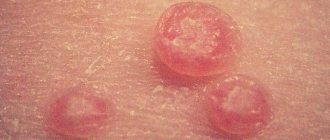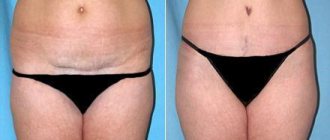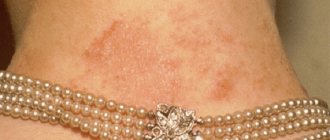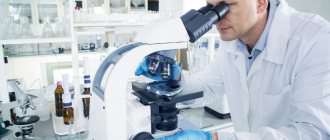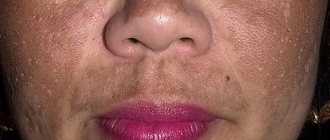Surgical correction of the anterior abdominal wall is an extensive and traumatic intervention. Individual characteristics of the body and its immunological reactivity, concomitant diseases of organs and systems can contribute to the development of serious consequences. Careful preparation for surgery and following your doctor’s recommendations will help reduce the risk of abdominoplasty complications.
During abdominoplasty, excess skin and subcutaneous fat and deformation of the muscular aponeurotic frame are subject to surgical correction. Abdominoplasty can be either an independent operation or one of the stages in the treatment of aesthetic manifestations of obesity. But in any case, this intervention cannot be considered as local. Unlike many other aesthetic surgeries, abdominoplasty creates significant functional tension in the respiratory and cardiovascular systems, which can itself lead to complications.
Patients with a high BMI (body mass index) often suffer from somatic diseases such as coronary heart disease, hypertension, and diabetes. Therefore, each patient needs a thorough examination and preoperative preparation, and after the operation he will undergo long-term rehabilitation and, most often, intensive therapy immediately after abdominoplasty.
All complications after abdominoplasty can be divided into general and local. General ones affect the entire body as a whole, while local ones affect only the operated area.
Common complications include:
- thrombosis of the lower extremities, pulmonary embolism,
- abdominal compartment syndrome,
- pneumonia.
Local complications can be divided into early and late. Early ones are:
- necrosis,
- ischemia,
- seroma,
- hematoma,
- abscess and phlegmon;
Late local complications:
- cosmetic scar defects (retracted, asymmetrical),
- uneven distribution of subcutaneous fat tissue,
- navel displacement.
Abdominal compartment syndrome (ACS)
Abdominal compartment syndrome (ACS) occurs when intra-abdominal pressure increases dramatically after surgery. This can lead to compression of organs, overload of the pulmonary circulation, hepatic-renal failure, difficulty breathing and even pulmonary edema.
To reduce the likelihood of this complication of abdominoplasty, doctors repeatedly measure intra-abdominal pressure during the operation and can monitor its increase. But you still need to remember that the severity of ACS depends not only on the growth rate and pressure, but also on the condition of organs and systems.
In the preoperative period, patients are recommended to wear a compression bandage for 2-3 weeks so that the body adapts to increased abdominal pressure, quit smoking and alcohol, reduce BMI by 10%, breathing exercises and moderate physical activity.
Treatment of complications may include decompression abdominoplasty, oxygen therapy, and the administration of muscle relaxants.
Causes and treatment of seroma after abdominoplasty
Abdominoplasty is included in the category of the most complex plastic surgeries. Surgical tummy tuck traumatizes an impressive area of skin and deeper structures, for example, the muscular aponeurotic layer. The risk of occurrence is quite large, and it becomes even higher if the patient has certain diseases, medical errors and non-compliance with the rules of the rehabilitation period.
Negative consequences include seroma after tummy tuck. Seroma refers to the accumulation of lymph fluid between tissues that were involved (injured) during surgery. According to statistics, such a complication forms in the suture area, i.e. future scar. Lymph collects in the cavity between the fat layer and injured capillaries, and can accumulate there for several weeks and months.
In what case is seroma considered a serious complication and what reasons can cause its appearance? When should a patient be wary and seek medical help in time? Is it possible to prevent the development of seroma?
Why does seroma appear after a tummy tuck?
During abdominoplasty, no matter how carefully the surgeon acts, he cannot avoid rupturing or cutting the lymphatic vessels. While blood vessels can quickly close with a thrombus, lymphatic vessels do not have this feature, so even after suturing, fluid (exudate) leaks out of them. Since the correction area is large and the incision is located in the pubic area, the patient is unable to create rest conditions for the injured tissues. Movement and sometimes even breathing can promote tissue movement, which again causes fluid to be released. In cases where the outflow of this excess fluid does not occur quickly, a seroma appears. Typically, the following factors increase the risk of developing seroma:
- Severe tissue damage. Normally, a plastic surgeon carefully and scrupulously separates healthy and pathological tissues. But if the doctor works clumsily and sloppily, he thereby increases the risk of free cavities appearing in the area of the future scar, where exudate will drain (be released).
- Increased immune activity. Lymph contains leukocytes, which perform a protective function in the body. In some cases, lymphatic fluid is formed in a larger volume and increases the likelihood of seroma formation. A long inflammatory process in the scar area leads to the same result. The longer the suture takes to heal, the higher the risk of seroma.
- Cardiovascular diseases . Fluctuations in blood pressure, disturbances in blood lipid balance and vasomotor reactions - all this contributes to the negative development of events.
- Increased body weight . It is generally accepted that if there is subcutaneous fat thicker than 5 cm, seroma will certainly occur.
- Elderly age. In people over 70 years of age, regeneration processes are much slower than in representatives of the younger generation. It is understandable why this category of patients will have a higher risk of seroma.
Signs of seroma
Seroma usually forms within 1-2 weeks after abdominoplasty. Its volume can be either small - from 10-20 ml, or quite impressive - up to 1-2 liters. It is quite difficult to understand that it is a seroma when it is small in size, since there are no pronounced symptoms. But when the volume of seroma reaches 0.5 liters, it is unlikely that seroma will be confused with something else.
At this stage, local swelling and discomfort appear in the scar area - aching or nagging pain. The patient may feel a “transfusion” of fluid in the problem area, notice hyperemia in the area of the body where serous fluid has accumulated. Many patients have a fever (37-37.5 degrees).
There is general weakness and fatigue. The listed signs are usually noticed by the patient himself. After contacting a plastic surgeon, other symptoms become known and are diagnosed by the doctor. The doctor notes an increase in the size of the abdomen, fluctuation and local hyperthermia.
Additionally, it is necessary to perform hardware tests. In these cases, the doctor prescribes an ultrasound, during which it will be possible to distinguish healthy tissues and cavities filled with lymph on the monitor. The doctor should also take a puncture to eliminate the risk of an abscess.
Will seroma resolve on its own?
In many cases, seroma resolves on its own, but even in this situation, the plastic surgeon carefully monitors the process, since at the slightest deviation from the norm, seroma can cause more serious negative consequences. Among them:
- Seroma suppuration. An extreme case is an abscess (purulent inflammation of tissues with their melting and the formation of a purulent cavity).
- An increase in cells that produce mucous fluid, which prevents the walls of the serous “pocket” from growing together. These circumstances aggravate the situation and complicate treatment.
- Deformation of the abdominal wall, thinning of the subcutaneous fat, the appearance of excess scar tissue. All of these signs are not dangerous to health, but they worsen the aesthetic appearance of the abdomen.
At a face-to-face consultation with Dr. Svetlana Pshonkina, find out how to avoid gray
How to treat gray
After abdominoplasty, drainage tubes are required to remove biological fluids from the body. The drainage system is removed after the volume of fluid does not exceed 20-30 ml per day. According to medical calculations, such an amount of exudate should not become a problem for the body, which must independently cope with the processing of this volume of liquid. This usually takes the body 2-3 weeks.
If the seroma only increases in size, the patient’s condition worsens, or the wound becomes infected, the doctor prescribes antibacterial drugs. Medicines should improve the outflow of lymph, reduce the cavity of accumulation of serous fluid, and eliminate the development of infection. In addition, the patient is prescribed drugs from the group of non-steroidal anti-inflammatory drugs (Diprospan and Kenalog).
If the treatment described above does not bring benefit, the doctor performs vacuum aspiration of the seroma. This is a surgical procedure during which the doctor makes an incision in the area of fluid accumulation. Through this incision, a special tube is installed inside, through which the serous contents are suctioned. In most cases, after the procedure there is significant relief and improvement in the condition, however, in non-acute patients, due to the individual characteristics of the body, a relapse may occur and aspiration will be required again.
Prevention of seroma after abdominoplasty
It is possible to prevent the occurrence of such a complication, but not only the surgeon, but also the patient himself must work well here. As for the surgeon, the specialist, even at the stage of planning the operation, must assess the risk of seroma and, if necessary, give certain recommendations to the patient. Directly during abdominoplasty, the doctor must work with the tissues extremely carefully and also carefully apply sutures to the wound in layers. After the operation, the surgeon installs a drainage system and prescribes the patient a course of antibiotics.
For his part, the patient must reach a comfortable weight and get rid of extra pounds. After a tummy tuck, you must wear compression garments and avoid physical activity, bending over, and lifting heavy objects. Do not skip examinations with a plastic surgeon.
According to plastic surgeons, it is not worth calling gray a complication, since this phenomenon represents only the specifics of the functioning of the body’s lymphatic system in a particular patient. But do not forget that if you have any disturbing pain symptoms, you should immediately consult a doctor, and not hope and wait for the problem to be solved on its own.
Make an appointment with Svetlana Pshonkina for a free 40-minute consultation on abdominoplasty +7 (495) 773-04-54
Thromboembolic complications
The likelihood of blood clots increases after any surgery. Abdominoplasty is no exception. The increased risk of complications is caused by blood loss and prolonged immobilization. Venous diseases, cardiac dysfunction and other pathologies further increase the likelihood of thromboembolism.
Signs of thromboembolism may include swelling and pain in the limb after surgery. And in the case of pulmonary embolism - shortness of breath, bluish discoloration of the skin, pain when inhaling and exhaling. To confirm the diagnosis, you may need an ECG, contrast tomography, ultrasound, or venography.
Hematoma
Hematoma is one of the most common local complications of abdominoplasty. It develops when bleeding is insufficiently stopped or can be triggered by increased blood pressure. Often, to prevent thromboembolism, patients are given drugs that inhibit blood clotting - anticoagulants. Their use may also cause bleeding. A sign of a hematoma may be a change in skin color, pain, swelling in the operated area, or an increase in body temperature.
The hematoma should be removed by puncture with a thick needle as early as possible. If the complication is not detected in time, it can lead to significant blood loss and suppuration in the abdominal cavity. For prevention, the patient should follow all the doctor’s recommendations, especially with regard to wearing compression garments and taking medications.
Possible complications
All complications after abdominoplasty are divided into two subcategories:
- General (reaction of body systems to surgery and medications).
- Local (localization of the problem directly at the site of the incision and wound).
Are common
Patient's pulmonary edema
It usually develops when fluid accumulates in the patient's lung tissue.
This condition occurs when there is excessive tension in the soft tissues of the abdominal part, which causes a sharp increase in intra-abdominal pressure.
Symptoms of pulmonary edema are:
- increased body temperature;
- shortness of breath;
- breathing problems;
- loss of consciousness, etc.
Scheme of formation of pulmonary edema
Development of intra-abdominal hypertension
The reason for this is the same as for pulmonary edema.
It is important to know that with a sudden increase in intra-abdominal pressure, the patient may experience serious damage to the kidneys, heart and nervous system.
Thromboembolism
It is a severe blockage of a vessel with thick blood (thrombus).
This is facilitated by the pathological accumulation of blood clots in the vessels of the extremities (most often this is observed in patients with varicose veins).
Hypostatic pneumonia
This is an inflammation of the lung tissue, which occurs due to stagnation of fluid in this organ.
This complication is provoked by insufficient mobility of the patient in the first days after surgery.
Heavy blood loss
This condition develops directly during surgery.
Severe blood loss occurs, usually due to bleeding disorders or when a large amount of fatty tissue is removed.
Abdominal syndrome
It develops with a sharp increase in intra-abdominal pressure.
In this condition, a person may:
- intra-abdominal compression of organs begins;
- circulatory overload occurs;
- develop acute renal failure;
- Acute liver failure may occur;
- pulmonary edema begins.
To reduce the risk of developing this syndrome, during surgery, doctors measure the patient’s blood pressure many times in order to be able to keep it under control and administer the necessary medications if the levels increase.
Local
The occurrence of local complications, that is, those that appear directly at the incision site, depends on many factors.
An unsuccessful tummy tuck occurs when the surgeon is insufficiently experienced, when the patient has concomitant diseases, or when there is extensive fat removal.
Most often, people experience the following local complications after abdominoplasty:
- Cosmetic complications in subcutaneous tissue.
This concept refers to the development of a hematoma. Usually it occurs quite rarely, especially when doctors managed to completely stop the bleeding. Despite this, there are cases of rapid development of subcutaneous hematoma. Symptoms: severe swelling in the wound area; profuse bleeding from the suture; redness of the wound; increase in the patient's body temperature. - Seroma
is an accumulation of exudate in the wound area. This local complication occurs due to disruption of the lymph nodes during surgery. After injury to these nodes, serous fluid begins to seep into the wound area. Externally, it has a dense structure, due to which it can mix in the seam area. It is most often diagnosed in patients who have had a large amount of fat removed. To eliminate it, doctors use puncture or installation of subcutaneous drainage. It is important to know that if a patient develops seroma, the time for his recovery will be significantly longer, since this complication is quite difficult to get rid of in a short time. - Severe suppuration of the wound
can develop when purulent bacteria and microbes enter it. This happens when the rules of sterility are not sufficiently observed during the operation, as well as when the wound is not properly cared for in the postoperative period. Signs of suppuration are: severe pain in the wound area; increase in body temperature; discharge of pus from the wound. It is important to know that if this condition is not treated, it can lead to sepsis. - Swelling of soft tissues in the abdominal area
, as a rule, occurs after each abdominoplasty. This is explained by the fact that such an operation is quite extensive - it injures many tissues, which leads to swelling. If you follow all the doctor’s recommendations, you can get rid of this unpleasant manifestation on your own within a few days. - Infection can enter the patient's body
during a blood transfusion. This procedure is usually performed when there is heavy blood loss and the patient's life is at risk. - Suture rupture
can occur due to excessive activity and physical exertion of the patient. This condition requires repeated surgery and stitches, as otherwise the open wound may become infected. - Soft tissue necrosis
causes too much tissue tension during suturing. In this case, the patient will experience tissue death, that is, the skin near the suture will darken and lose sensitivity. Tissue necrosis requires reoperation. - Loss of tissue sensation
can occur when nerve connections are damaged. Typically, nerve fibers recover on their own within a few months. - The formation of large scars
can occur with prolonged wound healing, necrosis or suture dehiscence. In this case, the final scar will be unaesthetic and completely unsightly.
Puncture of seroma Hematoma
Seroma
During abdominoplasty, large wound surfaces are formed, and serous fluid accumulates at their junctions and in the cavities. When moving and breathing after surgery, the tissues are displaced, and as a result of friction between them, more and more inflammatory exudate is formed. At some point, external signs of seroma will appear - noticeable swelling in the intervention area. The patient may complain of fever.
If a seroma is detected, the doctor performs aspiration - removing the contents with a needle, and prescribes antibiotics. Sometimes, to completely remove the contents of the cavity, 5-6 punctures are required with an interval of one or two days. In addition, the doctor applies a pressure bandage to reduce friction of the operated tissues. For large seromas, more radical treatment is required - careful drainage of the cavity through the surgical wound.
To prevent seroma, you need to adhere to bed rest for the first 24 hours after abdominoplasty and wear a bandage.
Postpartum recovery - page 102
Even before giving birth, I wrote a post “Visits from guests after childbirth.” Some said that receiving guests was very easy and simple, but for others it was hard! I am one of the mothers who had a “hard time”! I’ll describe everything briefly =) At my last appointment with the doctor, I was advised to have a cesarean section, since a large baby was expected, weighing 4,600. We consulted with my husband and decided to minimize the risks. I agreed! November 7, 2014, our long-awaited son Mark was born!
My husband was with me all the time, only he went home at night, and in the morning he was back in the hospital. To be honest, this was quite enough for me!
The Caesarean was successful. After an epidural, you only feel half of yourself, I was thirsty, I felt tired, I wanted to sleep. The view was not the best, and a catheter was inserted, and this wonderful bag of urine was there until I was unable to get up on my own. They brought me to the ward and brought my son. I couldn’t stop looking, happiness drowned out all the pain in my lower abdomen. The nurses, there were two of them, began to teach how to properly apply to the breast, how to hold it while feeding, etc. After the cesarean section, every movement was a feat for me. And then evening came, the doors opened and the husband’s parents arrived with wide smiles, flowers and congratulations. We've stayed long enough. At about 8 o'clock the husband and parents left for home. I was left alone with the baby. That night he slept with me in the ward. You can imagine how it was. Every 30 minutes I listened to see if she was breathing. Then feeding. During my entire stay in the hospital, my nipples were sucked until they bled, each feeding was accompanied by severe pain, and for each breastfeeding I was mentally prepared, biting my lip, and from the pain my legs stretched out, as if on command, into a string. On the second day they removed the catheter, lifted me up for the first time, and sent me to the shower. I saw myself in the mirror (I won’t describe it) Tears flowed naturally. I put myself in order as best I could. In the afternoon, Andrei’s cousin came with her husband and two children. Evening came, the doors opened... Andrei's cousin arrived with his wife and children, a little later, the husband's parents, the husband's aunt and uncle. I was lying in a small room with another mother. (it was expensive to rent a separate room: 100 euros per day + 45 euros for the husband) It was stuffy, I wanted to sleep, I was tired. At the same time as the guests, I fed Mark, and honey came. sisters for a routine round, inserted suppositories for constipation (sorry for the details). In general, my state of mind was undermined. On the third day, after getting out of bed on my own, albeit with the help of a handbrake, I had a pinched nerve on the right side under my shoulder blade. I remember all this and get goosebumps. The first attack was during the day, I was writhing in pain, I couldn’t stand it, I wanted to scream. I was given an injection, and after it I slept. And again evening. The doors opened... tadaaam... The wife of my husband’s brother came, followed by my husband’s parents. Everyone congratulates, smiles, says something... My brother’s wife started taking pictures of our son, and my mother-in-law took him to hold him without washing her hands. But I wanted peace and quiet. Everything was seething inside, the sensations were not very good. A little later, only the husband’s parents remained in the room. And again the attack. I was twisting, experiencing hellish pain, my husband was fussing and calling his nurse. I ask through clenched teeth that the child be taken away. The doctor and honey came running. sister. This time they inserted a candle into me, the pain subsided. My mother-in-law and father-in-law watched all this. After everyone left and I was left alone. Tears came and I cried for a long time. That night I slept alone, Mark was brought to me only for feeding.
My husband’s parents came every day, Andrey’s mother cooked soup and brought it to me at the hospital. For which I am very grateful to her. On the fifth day we were discharged. We took with us all the flowers and sweets that they gave us and came home. Our mother-in-law met us at home. We went up to our apartment. We needed time to get comfortable. My husband’s mother came and said, “Why did you bring flowers, it’s a bad omen!!!” When asked what this sign was, she replied, “What didn’t Andrei tell you?” What could you think? I’m panicking, my mother-in-law doesn’t say anything about the omen, I’m in a panic, tears are flowing, I ask my husband to throw out the flowers. A week later, Andrei told me what the sign was. Once the mother-in-law was in the hospital, her father-in-law brought her flowers and then took them home, and a year later, the mother-in-law underwent surgery. That's the whole sign. Why am I here?! If I even return to the hospital, according to the sign, it will be to the maternity ward =)
In general, guests are a frequent occurrence with us! We're almost 4 months old and I'm not quite ready for them yet!
A couple of photos from the hospital
Aesthetic scar defect
An unsatisfactory appearance of the postoperative scar may also be a complication of abdominoplasty. The reasons for the formation of unaesthetic scars may be the peculiarities of wound healing in the body, strong tension of the skin during suturing, and improper planning of incision lines. In this case, the scar may be too convex or retracted.
In general, scar defects can be corrected surgically, with the exception of keloid scars - in this case, you can only count on conservative therapy.

